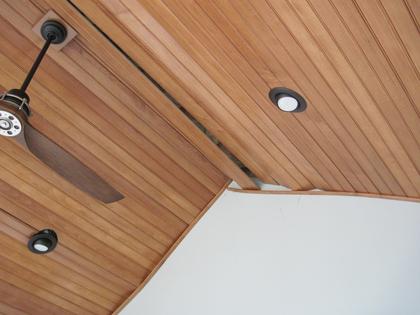Ask the Builder: Wood needs room to swell and shrink as moisture level changes
Wood is a true gift from God. We tend not to think of trees as an agricultural crop like tomatoes, wheat or corn, but in many cases they're not much different.
Any farmer who is lucky enough to have a stand of maple trees, AKA a "sugar bush," will tell you that his first crop of the year is maple syrup. Then, of course, there's the lumber value. Trees are routinely harvested here in my great state of New Hampshire, but the growing season is not 120 days like most fruits and vegetables; it’s decades.
We are lucky in this country to have abundant forests. The lumber harvested from them allows us to build durable homes, outdoor decks, pergolas, play sets, forts, furniture and countless other indoor and outdoor projects.
While wood has many positive attributes, it also has one negative quality that can cause homeowners enormous frustration and expense. Wood happens to be hygroscopic. This means it can absorb liquid water or water vapor. It can also release both, much like you squeeze water from a sponge.
The issue with wood is that when it absorbs or releases water in either state, it can swell or shrink. As if this movement is not bad enough, the swelling or shrinkage is not at all equal across the length, thickness and width of any given piece of lumber.
I’ll share two stories to illustrate this point. Almost 40 years ago, I built a stunning three-story Queen Anne Victorian replica home for my family. The joists used for the first and second-story floors were 2x12s cut from Southern Yellow Pine trees. The third-story floor was framed with 2x10s.
I also had two very tall chimneys that extended all the way from the basement up through the roof. When we roofed the house, I had to install tin-coated steel flashing to prevent leaks. Some of this metal was embedded into the mortar joints of the chimney, and the rest of the flashing was attached to the wooden roof sheathing.
The metal counterflashing that was attached to the chimney was cut so a 1/4-inch gap remained above the step flashings on the roof. Ten years later, I was up on the roof installing a solar-powered attic fan that ended up being a waste of time and effort. I happened to look at the chimney flashing and was stunned.
The gap between the two flashings was now 2 inches! This could only have meant that the chimney grew taller or the house dropped. You’ll hear builders and remodelers blame cracks in houses all the time on settlement, making you think your entire house is sinking into the soil.
If this had been the case at my home, there would have been no gap, as the chimney footing and the house footing would have both dropped into the soil. Yes, I know as a college-trained geologist some houses can sink into the soil, but that’s not the cause of most cracks, and it most certainly was not the cause of the huge gap between my flashings!
...continued







